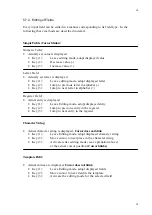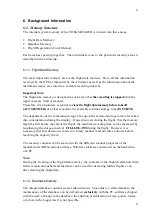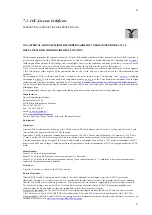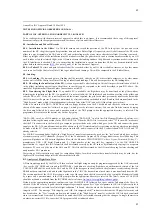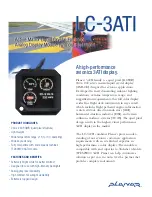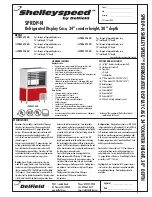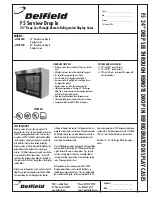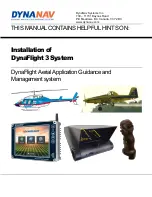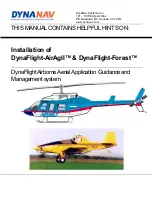
43
43
B4. Means of Propulsion (MoP) Record - Motor Gliders.
The MoP must either be sealed or inoperative, or the built-in microphone system used
(Hardware versions 3.3 or later). The microphone and filtering system records an ENL
value with each fix up to a maximum of 999. ENL values recorded on GFAC tests are
given below, in the sequence of a flight.
B4.1. ENL during launching.
During winch and aerotow launches, higher ENL values are to be expected than when soaring
(B4.3), typically up to 300 for winch and 200 for aerotow. On one winch launch a single ENL reading of 450 was recorded.
B4.2. ENL during engine running.
On engine running, an increase to over 700 ENL is expected with over 800 being typical.
The maximum value of 999 has been recorded with a two-stroke engine running at full power. During engine running these high
ENLs are produced for a significant time, and when altitude and speed are analysed it can be seen that substantial energy is being
added, which can therefore be attributed to energy not associated with soaring. The values quoted above are for 2- and 4-stroke
engines, Wankel (rotary) and electric engines have not been tested. There is no reason to believe that Wankel engines will not
give similar values to 4-strokes, but if an electric engine is encountered, please contact GFAC as soon as possible so that tests can
be carried out.
B4.3. ENL during gliding flight
. ENL readings of less than 050 indicate normal gliding flight in a quiet cockpit environment.
In a high-speed glide or in an aerodynamically-noisy glider, ENL may increase to about 200. Short periods of higher ENL while
gliding (up to about 300 ENL) may indicate aerodynamic noises such as due to airbrakes, lowering the undercarriage, sideslip, etc,
and are normal before landing. Particularly, sideslip with the cockpit DV panel open can produce low frequency noise and a high
ENL reading, also stalling particularly if the engine doors pant (move slightly in and out due to stall buffet, producing a clattering
noise). Finally, where the engine is mounted on a retractable pylon, a high ENL reading will be shown if flying with the pylon up
and engine not running, due to the high aerodynamic noise.
B4.4. ENL during the approach to land
. ENL values are always higher on a landing approach due to aerodynamic noises such as
due to airbrakes, undercarriage, sideslip, etc. Short-term peaks due to specific actions such as opening airbrakes, lowering
undercarriage, etc., will be noted as well as a generally higher level of ENL because the glider is no longer aerodynamically "clean".
ENL values of up to 400 have been recorded, although 200 is more typical.
B4.5. ENL during landing.
During ground contact during takeoff and landing, short-duration ENL readings up to about 700 have
been recorded due to wheel rumble; unlike engine running these last only for a short time, showing a short "spike" on the
noise/time trace.
B4.6. ENL analysis.
It is normally easy to see when an engine has been running and when it has not. Other data such as rates of
climb and groundspeed, will indicate whether or not non-atmospheric energy is being added. Short term peaks in ENL (10 seconds
or so) may be due to the other factors mentioned above such as undercarriage and/or airbrake movement, sideslip, open DV
panel/sideslip, the nearby passage of a powered aircraft, etc. If in doubt, send the *.IGC file to GFAC for further analysis and
advice.
B5. Calibration of Barograph Function.
The FR can be calibrated in an altitude chamber in the same way as a drum barograph. Recording starts soon after power is applied,
and no GPS fixes are required for a pressure altitude trace to be produced. After the calibration, the data containing the pressure
steps used, is transferred to a PC as if it was flight data (see B2.3 above). The IGC format calibration data file will then be analyzed
and a correction table produced of true against indicated altitudes. This table can then be used to adjust pressure altitudes which are
recorded during flight performances and which require correction for validation to IGC criteria. These include takeoff, start and
landing altitudes for altitude difference and for comparison with independently-recorded QNH readings, and low and high points on
gain-of-height and altitude claims. Pressure altitudes are recorded up to 19.5 km, but GNSS altitude is only recorded up to 9990m
(32,776ft) with the Koden receiver; but up to 19,480m (63,911ft) with the Garmin 12-channel GPS-25 receiver fitted to nearly
all units. The maximum altitude tested by GFAC was 33,000 ft.






